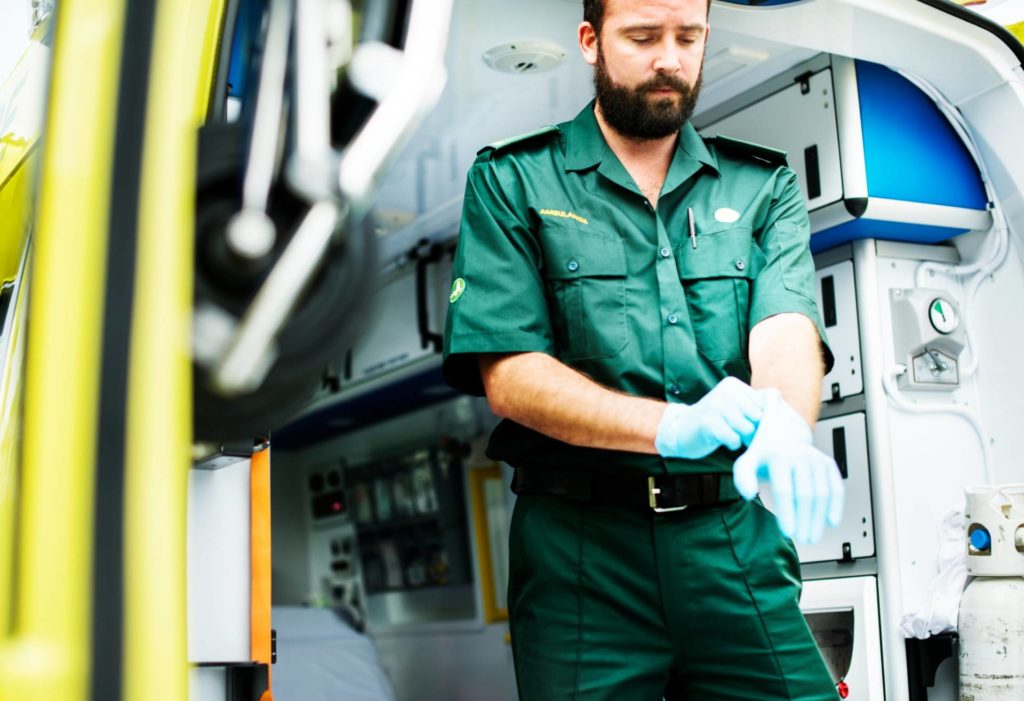The Four Most Common Injuries Suffered By EMS Workers

Emergency Medical Service professionals work in a fast-paced and strenuous industry, oftentimes doing everything in their power to help prevent injuries and save lives. Statistics show that EMS professionals treat roughly 22 million patients every year, but sometimes those workers end up requiring care because of injuries they suffer during the course of their duties.
In fact, nearly 100,000 EMS professionals are treated for injuries suffered during the course of their duties every year, and the rate of injuries for EMS workers is nearly three times the national average. Below, we take a closer look at some of the most common injuries that EMS personnel suffer during the course of their life-saving duties.
Common EMS Injuries
Here’s a look at four of the most common types of injuries suffered by EMS professionals during the course of their duties. The findings have been provided from data accumulated by the National Institute for Occupational Safety and Health (NIOSH).
1. Overexertion and Body Motion – 28 percent
The most common type of injury suffered by emergency service technicians are classified as overexertion and body motion injuries. EMS professionals often have to quickly lift and transfer patients so that they can be loaded into and out of the ambulance. Overexertion injuries can oftentimes be reduced in a hospital setting where mechanical and multi-team lifts can be performed, but EMS workers don’t have those luxuries when time is of the essence. This forceful exertion oftentimes leads to muscle tears, nerve impingement or joint injuries.
2. Exposure To Harmful Substances – 27 percent
Coming in at a close second are injuries caused by an accidental exposure to harmful substances. EMS professionals oftentimes deal with open wounds or the aftermath of a drug overdose, and exposure to blood or an accidental needlestick can lead to the transmission of bloodborne pathogens. Medics oftentimes wear a variety of personal protective equipment to help reduce the likelihood of a bloodborne pathogen transmission, but due to the rush to provide immediate service and the potentially hectic nature of the emergency scene, sometimes these protective devices are not enough.
3. Slips, Trips and Falls – 16 percent
Accidental falls are a leading cause of injury across many professional industries, and that sentiment holds true with EMS professionals. Oftentimes tasked with working in unfamiliar environments or with carrying and moving patients across different terrain, it’s easy to see how a misstep can occur. Rushing to provide care as quickly as possible can also lead to falls on the same level or when working to maneuver a patient up or down a flight of stairs. The stress and fatigue that can accompany the role of an emergency responder can also make it harder for people to recognize and account for potential tripping hazards.
4. Motor Vehicle Accidents – 8 percent
The final type of injury hazard that makes this list is a motor vehicle accident, accounting for eight percent of all non-fatal injuries experienced by EMS workers. It may rank as fourth on this list, but it’s worth noting that the rate of motor vehicle accidents among EMS workers is more than 20 times higher than the national average for all other occupations! Make it a point to slow down and move over any time you see an ambulance approaching or hear the sirens. T-bone accidents at intersections are the most common type of motor vehicle accident, and they can be quite severe even at low speeds, because crash investigations showed that 84 percent of EMS personnel in the patient compartment of the ambulance were not wearing a seat belt at the time of the crash, with the primary reason being that a seat belt impeded their ability to provide care to the on-board patient.
Healthcare workers and EMS personnel put their bodies on the line each and every day to help others in need, and the team at Gold Cross Ambulance Service will do the same for you if you ever need assistance! Learn more about our medical team on this page or give us a call today at (920) 727-3020.
Leave a Reply